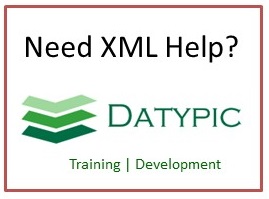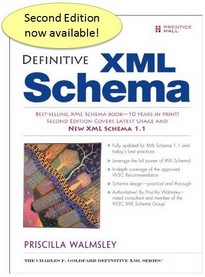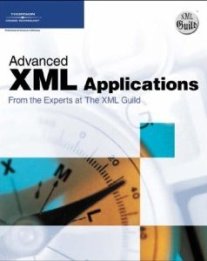whereas
A statement of a single ”why” for a resolution. The text “Whereas” is generally the first word in each whereas element.
Element information
Content
- Sequence [1..1]
- text [1..1]Textual material that follows a header, an enumerator, an enumerator/header pair, or as a cut-in (flush-left) final text after a non-structural element such as a quoted-block, table, graphic, etc.. In appropriations bills, the function performed by the text element is usually performed by the appropriations paragraph element.
- Choice [0..*]
- paragraphA hierarchical structure of a measure. This level is contained directly with subsections. Levels contained within paragraphs are subparagraphs, clauses, subclauses, items, and subitems. Subparagraphs are normally enumerated with a numeric values within parentheses (e.g., (1)).
- tableThe table model for Congressional legislative documents uses the OASIS (formerly known as CALS) Table Exchange Model with some additions and modifications to accommodate House and Senate requirements as defined by the U.S. Government Printing Office.
- graphicA pointer to a file containing a graphic and information about the graphic. The <graphic> element uses attributes that point to an external graphic file such as a photograph of a person or a drawing of a warning symbol. The attributes and their values have been modeled on GPO attributes. The actual graphic is usually stored in an external file and merely named by the attributes of this element. The element itself would be empty, but it is used to contain a brief description of the graphic (See element <graphic-description>). This description can be used for searching, to display in place of the graphic in an online system, or to be read by a voice synthesis device for the visually-impaired who cannot see the graphic.
- formulaContainer for a graphic element representing a scientific or mathematical equation.
- pagebreakUsed to force a new page in the output. Should be used very rarely.
- listA container element for a sequence of list-items organized as a list. The list can be non-numbered, numbered, or lettered.
- legis-commentThe legis-comment element defines a comment to the legislative language.
- quoted-blockTextual matter used to amend current law. Quoted block is so named because it is printed or displayed with quotation marks in front of each structural and non-structural level. (These quotation marks are generated for print or display; they are not part of the data.) The name “quoted block” is not meant to imply that the words within this element exist somewhere else and are being quoted. Rather, they signify text to be used to amend current law. In print or display, quoted material usually takes on the style (margins, enumeration style, typographic style, etc.) of the document which is being amended. Thus, a bill in OLC style that is intended to modify United States Code, would put text that was to be inserted into the United States Code inside the quoted block (structure of legislation) and the words would print in USC style, with a quotation mark preceding each level. Other rules that apply to the specific style associated with the quoted-block also need to be applied. For example, when using USC style, section enumerators are preceded by a section symbol and a thin space rather than the word “Sec.”. Note: Words displayed in quotation marks for emphasis or to indicate a speech are not considered to be quoted-block.
- non-statutory-materialUsed to contain non-statutory material. Non-statutory material examples are poems, song stanzas, newspaper articles, and book passages.
- tocThe table of contents for a measure or portion of a measure. The attributes of the toc element are used for regeneration of the toc within the authoring environment. There are essentially two toc sub-models (toc-entries or multi-column-toc-entries). Both models are non-hierarchial in that the legislative structure is defined in an attribute rather in the structure of the toc itself. The toc-entries sub-model, the most common, is sequence of enumerators and headers from the measure's source using PCDATA. There is no distrinction between the enumerator and header elements within the toc-entry elements. The multi-column-toc-entries sub-model contain up to three columns of data per entry (toc-enum, level-header, and target or page-num). Both sub-models also support quoted-entry elements (ie.g., toc-quoted-entry and multi-column-toc-quoted-entry respectively).
from subst. group nonstructured-level-model
Attributes
| Name | Occ | Type | Description | Notes |
|---|---|---|---|---|
| changed | [0..1] | Anonymous | Has this ENTIRE structural element (such as a Section (structure of legislation), Title (structure of legislation), etc.) been added or deleted?Note: Use the <added-phrase> and <deleted-phrase> elements for changes inside a structure that are less than the full structure.This attribute is used to mark entire structures that should be made typographically distinct because they have been added to or deleted from a measure. In contrast, the added phrase <added-phrase> and deleted phrase <deleted-phrase> elements are used to indicate changes within a structure that are less than the full structure, sometimes as little as a word, a number, or a few letters.A structure (such as a title or a section) that has been marked as changed using this attribute is usually presented in a different typographic style to indicate the change. Material that has been inserted (added) is typically in italics. Material that has been removed (deleted) is typically struck through. | from group res-structure-attributes |
| committee-id | [0..1] | xsd:anySimpleType | The id of a working subdivision of a chamber, which prepares legislation or conducts investigations | from group res-structure-attributes |
| reported-display-style | [0..1] | Anonymous | from group res-structure-attributes | |
| indent | [0..1] | Anonymous | Mechanism permitting an override of the indentation typically used or a way to specify indentation level for a structure. The values are relative (up1 through up7 and down1 through down7) and absolute (the structure level can be specified such as subsection). | from group res-structure-attributes |
| commented | [0..1] | Anonymous | Default value is "no". from group res-structure-attributes |
Used in
- Anonymous type of element preamble


